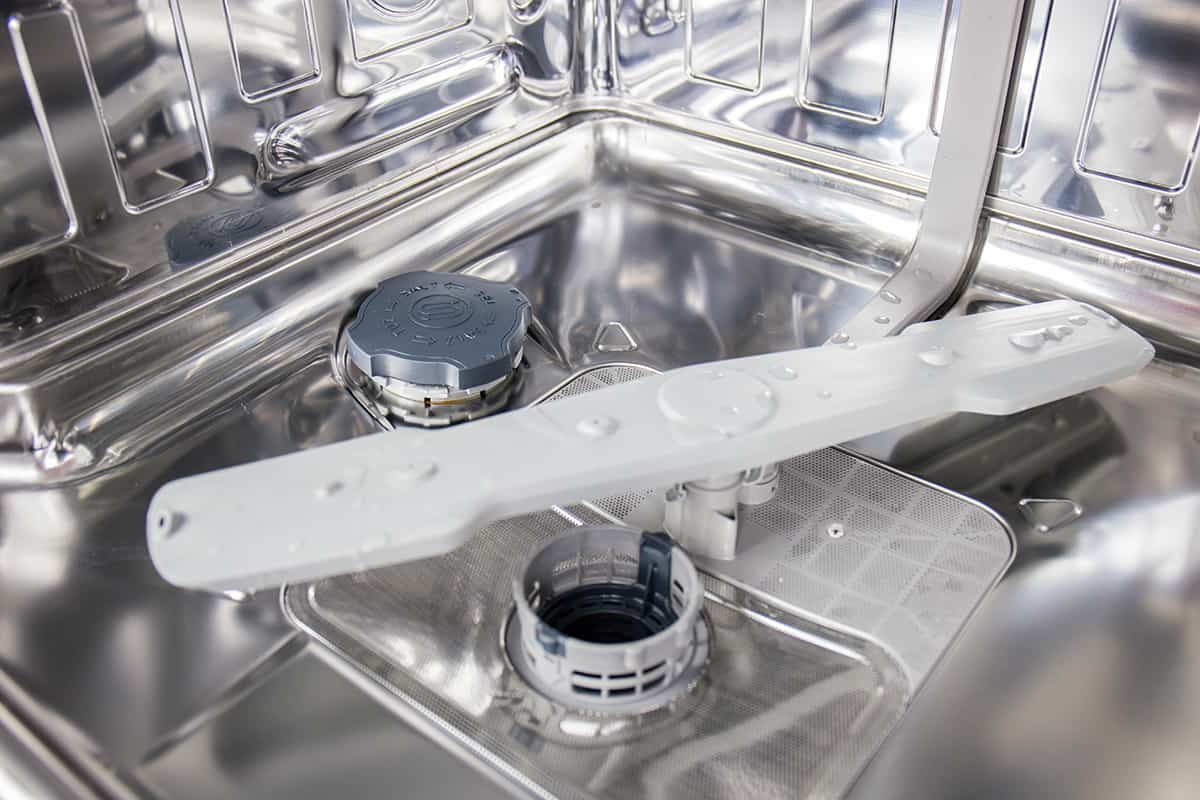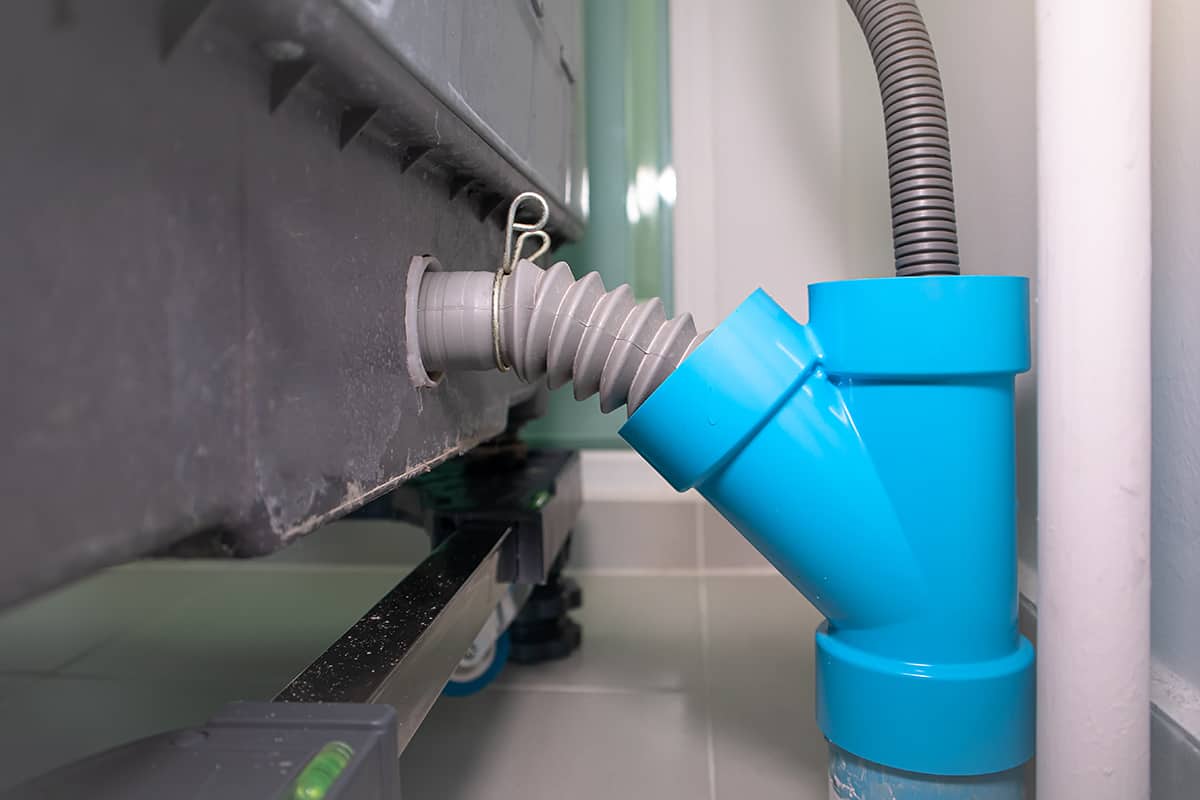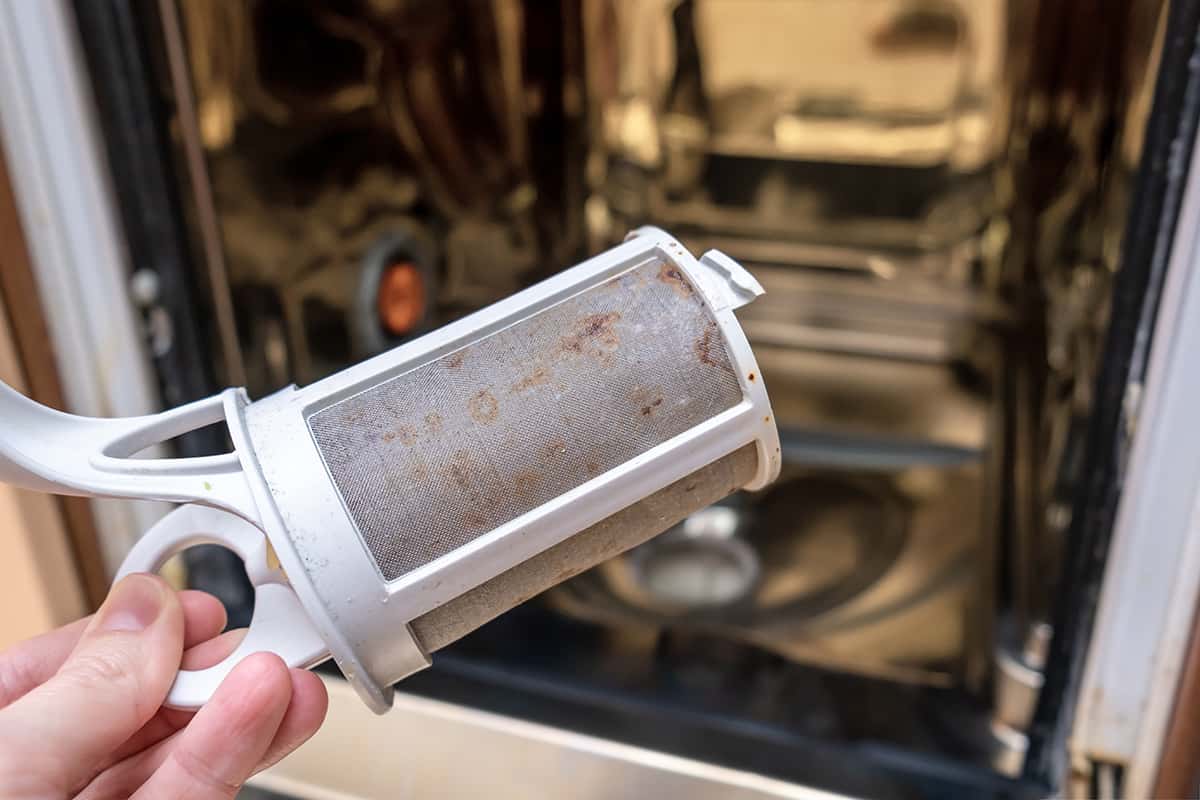Dishwashers need love and care, too. You can’t expect your dishwasher to continuously wash your dishes without taking care of it. And one of the most forgotten steps when cleaning a dishwasher is removing funk from the drain line.
After cleaning the inside of your dishwasher (including the filter), check underneath the sink and disconnect the drain hose. Use a long, dull, bendable object to remove solid debris from the drain line before reconnecting it.
There’s a lot more you need to know about cleaning a dishwasher drain. In this guide, I’ll explain the precise steps you need to follow in cleaning a dishwasher drain and all of its connections.
How to Clean Out a Dishwasher Drain
For many people, dishwasher maintenance is mainly about resetting the machine and hoping for the best. In many cases, this will work, but when you see standing water inside the machine or puddles accumulating in front of the dishwasher door, a simple reset sequence isn’t enough.
In many cases, standing water and water puddles are symptoms of a clogged dishwasher drain. This can happen when large debris makes its way past the filters and settles in the drain hose or pipe. Luckily, there’s an easy fix for this—simply clean out the dishwasher drain.
How do you do this? I’ll explain below, but first, make sure you have the following supplies on hand:
- Rubber gloves
- Bucket
- Screwdriver
- Straightened wire hanger or power drill with plumbing snake attachment
- Measuring cup with water
1. Preparation
Before doing anything, we have to make sure the inside of the dishwasher is clean. To do this, unload the dishwasher, remove the dishracks, and clean the filter assembly. When you’re done, you can reinstall the filter assembly and load the dishwasher back up with your dishes (optional).
2. Disconnecting the drain line
If you have a freestanding dishwasher, carefully pull it forward so that you have clear access to the backside of the machine. For integrated dishwashers, look for the connection of hoses and pipes inside your cabinets.
Place the bucket underneath the drain line before using the screwdriver to loosen the ring clamp. When the clamp is loose enough, disconnect the drain line, allowing the water to fall into the bucket.
3. Inspecting the drain line for clogs
Now, it’s time to check whether or not the drain line is actually clogged. If it’s not, you can connect the drain line, fasten the ring clamp, push your dishwasher back to its original position, and continue searching for leaking problems elsewhere.
4. Cleaning the drain line
If the drain is clogged, take a long, thin object, such as a straightened wire hanger, and carefully use it to remove the solid debris clinging to the inner walls of the drain hose. Alternatively, you can use a plumbing snake attachment that’s thin enough to fit inside the hose.
5. Testing the drain line
After removing as much solid debris from inside the hose as possible, take your measuring cup with water and pour the water slowly and carefully into the hose. If the water goes down the hose, then your job is done. If the water flows back out and into the bucket, then you need to continue removing solid material from the line.
6. Reconnecting the drain and testing the dishwasher
After you’re confident the drain is no longer clogged, you can reconnect it to the dishwasher valve with the ring clamp. Push the dishwasher back to its original position or shut the cabinet door. Finally, run a test cycle to see whether the dishwasher drains water.
How to Clean the Garbage Disposal

In many American homes, kitchen sink drains are connected to a garbage disposal. This is a machine that pulverizes old food remnants into tiny, manageable pieces that flow down the drain. Most of the time, the dishwasher and garbage disposal will be connected to the same 3-way valve that leads to the sewer line.
If your dishwasher is connected to your garbage disposal, there might be a chance that some of the solid debris has gone into the garbage disposal and not the drain line. One clear sign of this is when your sink doesn’t drain quickly enough. The only solution is to clear the garbage disposal of all solid debris.
There’s a brief explanation of how to clean your garbage disposal in my Miele Dishwasher Leaks (Causes & Fix) guide, but this is how it’s done:
- Turn the garbage disposal on for 30 seconds.
- Flush water down the kitchen sink and through the garbage disposal.
- If that doesn’t work, disassemble the garbage disposal.
- Wash the garbage disposal with soapy water and use chopsticks to remove solid debris hidden inside the device.
- Reinstall the garbage disposal, making sure that the connections are secure.
How to Prevent the Drain from Clogging
After you’ve finally unclogged the dishwasher drain line, it’s time to make sure that this never happens again. The solution is quite simple—pour vinegar down the drain.
You can do this by adding a cup of vinegar to a bowl and placing the bowl inside an empty dishwasher. Run a regular wash cycle to clean the inside of the dishwasher while the flushed water clears the drain from clinging debris.
Alternatively, you can pour vinegar directly down the dishwasher’s drain. If your kitchen sink and dishwasher are connected to the same valve, simply pour vinegar down the kitchen sink. If the dishwasher’s connections are separate, pour straight-up vinegar down the dishwasher’s drain.
Now, wait for 5 to 10 minutes before flushing your sink or dishwasher with fresh, clean water. Do this at least once a week to break up tiny clumps in the drain and prevent them from growing.
Something worth noting is that dishwashers benefit when they’re used frequently. On average, you should run a dishwasher 5 times a week to ensure nothing in the drain line has enough time to dry onto the inner lining.
Is Dishwasher Drain Pump Broken?

Dishwashers come with several pumps, including a drain pump. The drain pump is responsible for forcing water down the drain, preventing too much water from accumulating in the tub and spilling over.
If you’ve eliminated a dirty filter assembly and a clogged drain from the equation, then a faulty drain pipe might be the cause of standing water or water puddles in front of your dishwasher.
To pinpoint the problem, we will need to inspect the drain pump. Here’s what you’ll need:
- Screwdriver
- Pliers
- Multimeter
- When you have all these tools on hand, you’re ready to crack open the dishwasher and check on the drain pump’s condition.
- Depower the dishwasher by unplugging it or turning off the circuit to the appliance.
- Tip the dishwasher on its side. For integrated dishwashers, remove it from the cabinet before placing it on its side.
- Detach the bottom plate by removing the screws.
- Undo the clamp harness to remove the bottom plate completely.
- Locate the drain pump following the owner’s manual.
- Restore power to the dishwasher BUT DO NOT TURN IT ON.
- Use the multimeter to check the drain pump for resistance.
- If the pump doesn’t provide an optimal reading per the multimeter’s instructions, the drain pump might be faulty.
If you don’t have the technical know-how to disassemble your dishwasher and replace the faulty drain pump, I highly advise that you seek the help of a trained professional. Also, if your dishwasher is still under warranty, you should talk to the manufacturer’s representative to see what they can do to resolve the problem for you.






